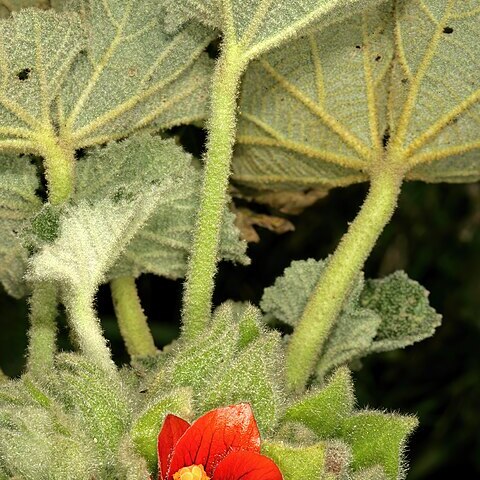Perennial herb; densely stellate-tomentose. Stems procumbent. Leaves with blade broadly ovate to orbicular, 120-140 x 120-140, base deeply cordate, margins toothed, 7-9-nerved. Flowers: in cymes; epicalyx of 12 linear, tomentose segments, connate at base to form a shallow basin; calyx with tube 20 mm long, lobes shorter, accrescent; petals 20-30 mm long, slightly longer than calyx, claret-red. Fruit enclosed by persistent calyx.
Coarse, roughly hairy perennial, with trailing stems up to 1 m long, from a woody rootstock. Leaves long-petiolate, blades suborbicular-cordate, crispulate, paler beneath. Flowers at ground level, axillary, concealed beneath leaves, deeply cup-shaped, reddish orange with a dark centre, epicalyx of 25 mmear lobes. (Oct.-)Dec.-Mar.
Coarse, roughly hairy perennial with trailing stems from a woody rootstock. Leaves long-petiolate, suborbicular-cordate, crispulate, paler beneath. Flowers axillary on the ground, concealed beneath leaves, deeply cup-shaped, reddish orange with a dark centre, epicalyx of 12 linear lobes.
Procumbent herb, densely stellate-tomentose. Leaves orbicular or ovate, deeply cordate, 7-9-nerved. Epicalyx of 25 mmear tomentose lobes connate at base to form shallow basin. Calyx tube 20 mm long, lobes shorter. Flowers claret-red.

